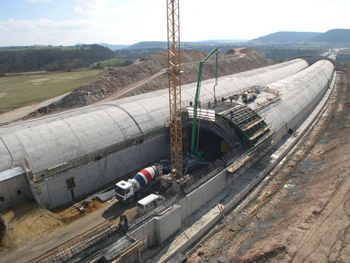
Surface Tunnelling
Two Main Types of Underground Structures Built by Surface Tunnelling can be identified:
Open Trench
Cut-and-Cover Structures
Surface tunnelling encompasses all construction methods of underground structures built by a temporary or permanent open trench in the surface.
The construction sequence of surface tunneling is composed of the following steps:
- Construction of retaining walls along the future underground structure
- Ground excavation and support of the retaining walls
- Completion of the underground structure
- In case of cut-and-cover system, reestablishment of the surface use
Retaining walls can be made by different means: Steel piles and wood sheets, diaphragm walls casted in place, pre-cast diaphragm walls, tangent pile retaining walls, large piles and shotcrete archs, etc.
Once the retaining walls are made and excavation progresses, support of the retaining walls must be made in order to guarantee the stability. For that, struts and/or tie-backs are put in place in diagonal for large sections and in transversal for narrow trenches.

According to the order of construction, cut-and-cover system can be done in direct, inverse or door-to-door excavation methods.
Direct cut-and-cover consists on surface reestablishment after completing of all works.
Inverse method, however, considers the surface reestablishment just after completing the first-level slab of the underground structure.
The door frame method is similar to the inverse method, but instead of retaining walls, foundation elements are built.
More info:
- Surface tunneling ITA slideshow (Adobe Pdf 6mb)
